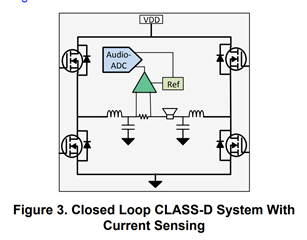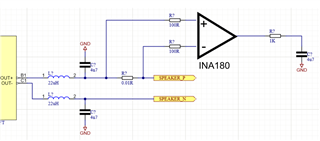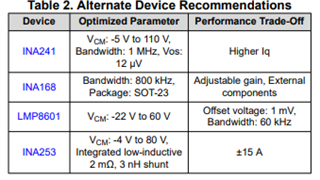Other Parts Discussed in Thread: INA168, INA240
Hi!
I have been investigating ways to measure loudspeaker current connected in a bridge-tied-load fashion to a class D amplifier.
Following the excellent SLYA031, I have decided on placing my shunt post the LC filter (https://www.ti.com/lit/ab/slya031a/slya031a.pdf)

I am really only interested in a low-passed current response, hence I do not care for bi-directional sensing.
My question is: why should it not be possible to choose the INA180 for this application? With the BTL architecture, I expect the common-modes to stay above 0 - but I might be wrong here. In that case, would adding some input resistors and accepting the gain error degradation be of any good?
So far, my suggestion for a schematic looks like this:


